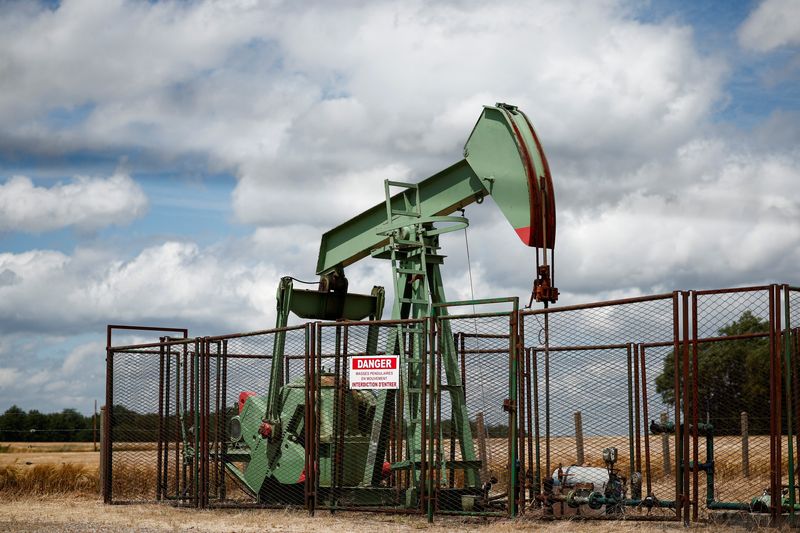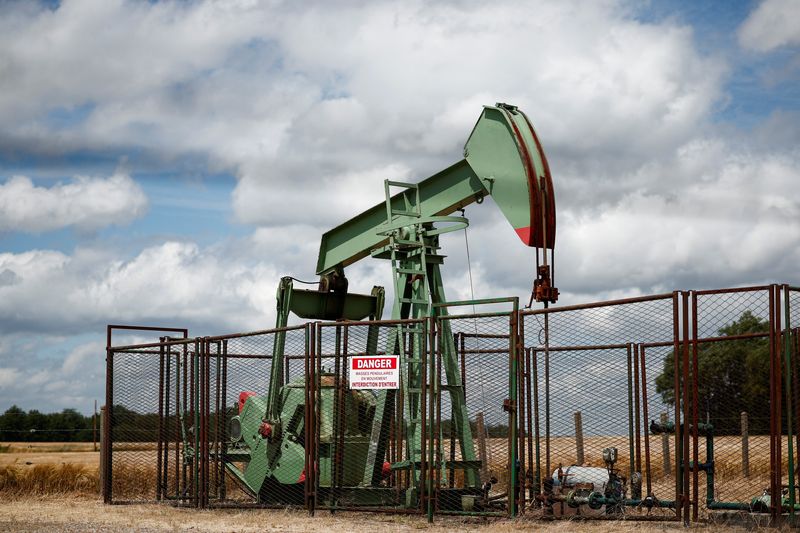
By Arathy Somasekhar
HOUSTON (Reuters) -Oil prices rose on Wednesday, supported by large draws in U.S. crude and fuel stocks, but hovered close to their lowest level in six weeks due to concerns over weak global demand.
Still, prices snapped three straight sessions of decline on falling U.S. crude and fuel inventories, as well as growing oil supply risks from Canadian wildfires.
Brent crude futures for September rose $1.07, or 1.3%, to $82.09 a barrel by 1:12 p.m. ET (17:12 GMT). U.S. West Texas Intermediate crude for September increased $1.04 cents, or 1.4%, to $78 per barrel.
U.S. crude inventories fell by 3.7 million barrels last week, the EIA said, compared with analysts’ expectations in a Reuters poll for a 1.6-million-barrel draw. [EIA/S]
U.S. gasoline stocks dropped by 5.6 million barrels, compared with analysts’ expectations for a 400,000 draw. Distillate stockpiles, which include diesel and heating oil, fell by 2.8 million barrels versus expectations for a 250,000-barrel increase, the EIA data showed.
“Demand is better than anticipated,” said Bob Yawger, director of energy futures at Mizuho in New York.
“As long as gasoline is doing well, that will support the rest of the market into the short-term future. Higher distillates demand was the icing on the cake,” Yawger added.
However, the market remained wary about global summer demand. U.S. oil refiners are expected to report sharply lower second-quarter earnings versus a year ago after a listless summer-driving season weakened refining margins, energy analysts said.
Prices are under pressure from ceasefire talks between Israel and Hamas and continued concern that the economic slowdown in China, the world’s biggest crude importer, would weaken global oil demand.
Crude-oil deliveries to India, the world’s third-biggest oil importer and consumer, also slipped in June to their lowest since February, government data showed.
WTI lost 7% over the previous three sessions, while Brent was down nearly 5%.
Buoying prices, wildfires in Canada forced some producers to curtail production and threatened a large amount of supply.

Imperial Oil (NYSE:IMO) said it has reduced non-essential staff at its Kearl oil sands site as a precaution.
Russia’s energy ministry pledged to stick to the crude-output quota set by the OPEC+ group in July, after its June production exceeded limits.
This post is originally published on INVESTING.


